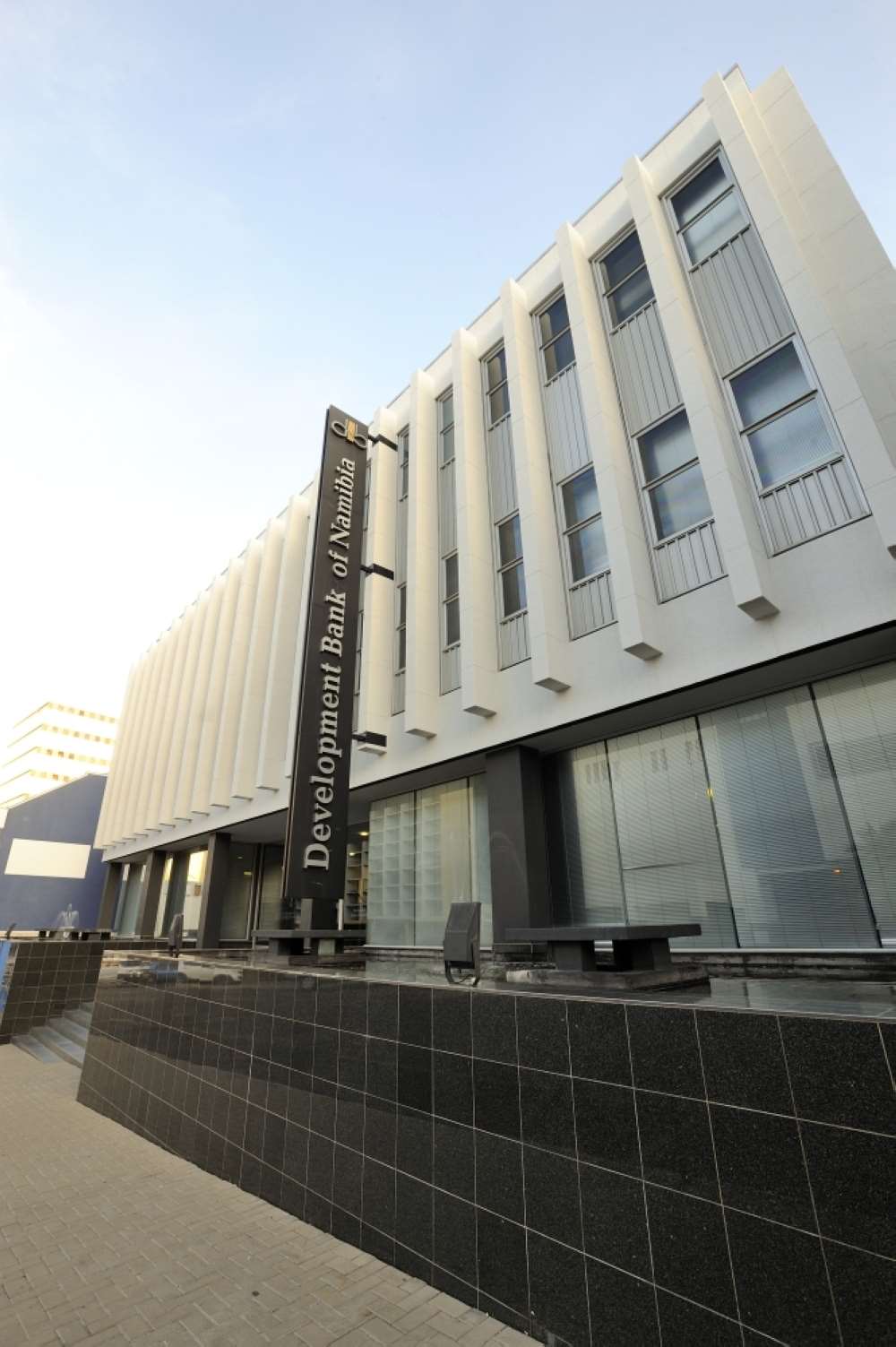DBN remains stuck with junk status
Still haunted by pandemic
Fitch Ratings, one of the top three credit rating agencies in the world, has kept the Development Bank of Namibia's long-term debt in foreign currencies, excluding the rand, at two notches below investment grade.
The ratio of stage-3 impaired loans of the Development Bank of Namibia (DBN) has spiralled from 13% at the end of March 2020 to 33% at the end of March last year.
This, combined with the bank's full ownership by the government, is one of the key factors influencing Fitch Ratings' decision to maintain the DBN’s long-term issuer default rating (IDR) at 'BB-', which is two notches below investment grade.
“The sharp deterioration reflects DBN's weak risk profile due to its development lending focus and weak economic conditions, due partly to the [Covid-19] pandemic, weighing on borrowers' repayment capacity,” Fitch said on Friday when it affirmed the DBN’s IDR with a stable outlook.
An IDR reflects debt in foreign currencies, excluding the rand, and according to Fitch, a BB rating means an “elevated vulnerability to default risk”.
Fitch’s national long-term rating for the DBN was affirmed at 'AA (zaf)', with a stable outlook. This is a high quality rating.
Expected credit loss
According to the DBN’s 2022/23 Annual Report, the total expected credit losses (ECL) on stage-3 impaired loans at the end of March last year amounted to nearly N$1.36 billion. The latest International Financial Reporting Standards (IFRS) regards a stage-3 loan as a financial asset which is credit impaired.
The DBN’s 2019/20 Annual Report shows that loans of nearly N$504.9 million were moved to stage 3 at the end of March 2020.
On Friday, Fitch noted that the DBN’s impaired loans ratio “eased slightly by end-December 2023 due to write-offs and some recoveries”.
DBN’s financials show that it wrote off nearly N$705 million in its 2023 book-year, compared to about N$98 million in 2022.
Fitch on Friday pointed out that the DBN’s profitability continued to weaken in its past financial year due to high loan impairment charges (LICs) that accompanied loan-quality deterioration.
The DBN reported a net loss of nearly N$270 million for the year ended 31 March 2023, about 46% more than in its previous book-year. In 2020, the DBN made a net profit of about N$229 million.
Fitch on Friday said it expects LICs will decrease sharply following the completion of the DBN’s lending book clean-up and the bank should post a small net profit in its 2024 financial year.
Government
Fitch said the Namibian government has a high propensity to support the DBN, but “the sovereign's ability to provide support is constrained by its own creditworthiness, as indicated by its long-term IDR”.
Government also has a 'BB-' IDR with a stable outlook at Fitch. Namibia was first rated as junk by Fitch and Moody’s in 2017. Namibia has had four sub-investment downgrades by the agencies.
Fitch on Friday described the DBN as “Namibia's flagship and largest policy bank” and said it contributes to the country's economic growth and social development.
“Its strategy is aligned with national development objectives and is highly influenced by Namibian government policy, with close oversight from its shareholder, the ministry of finance (MoF),” Fitch said.
“The MoF's 100% stake in DBN is strategic and long-term. While the sale of a minority share is permitted under DBN's act of incorporation, we believe this option will not be exercised in the medium term given DBN's policy role and non-commercial focus,” the rating agency added.
The DBN remains well-capitalised despite large net losses, Fitch said.
“Its high Fitch Core Capital (FCC) ratio of 77% at FYE23 was supported by a low-risk-weight density (49%), mainly reflecting high government-related lending. DBN's tangible leverage ratio (FYE23: 38%) provides a large buffer to absorb potential further losses,” Fitch added.
This, combined with the bank's full ownership by the government, is one of the key factors influencing Fitch Ratings' decision to maintain the DBN’s long-term issuer default rating (IDR) at 'BB-', which is two notches below investment grade.
“The sharp deterioration reflects DBN's weak risk profile due to its development lending focus and weak economic conditions, due partly to the [Covid-19] pandemic, weighing on borrowers' repayment capacity,” Fitch said on Friday when it affirmed the DBN’s IDR with a stable outlook.
An IDR reflects debt in foreign currencies, excluding the rand, and according to Fitch, a BB rating means an “elevated vulnerability to default risk”.
Fitch’s national long-term rating for the DBN was affirmed at 'AA (zaf)', with a stable outlook. This is a high quality rating.
Expected credit loss
According to the DBN’s 2022/23 Annual Report, the total expected credit losses (ECL) on stage-3 impaired loans at the end of March last year amounted to nearly N$1.36 billion. The latest International Financial Reporting Standards (IFRS) regards a stage-3 loan as a financial asset which is credit impaired.
The DBN’s 2019/20 Annual Report shows that loans of nearly N$504.9 million were moved to stage 3 at the end of March 2020.
On Friday, Fitch noted that the DBN’s impaired loans ratio “eased slightly by end-December 2023 due to write-offs and some recoveries”.
DBN’s financials show that it wrote off nearly N$705 million in its 2023 book-year, compared to about N$98 million in 2022.
Fitch on Friday pointed out that the DBN’s profitability continued to weaken in its past financial year due to high loan impairment charges (LICs) that accompanied loan-quality deterioration.
The DBN reported a net loss of nearly N$270 million for the year ended 31 March 2023, about 46% more than in its previous book-year. In 2020, the DBN made a net profit of about N$229 million.
Fitch on Friday said it expects LICs will decrease sharply following the completion of the DBN’s lending book clean-up and the bank should post a small net profit in its 2024 financial year.
Government
Fitch said the Namibian government has a high propensity to support the DBN, but “the sovereign's ability to provide support is constrained by its own creditworthiness, as indicated by its long-term IDR”.
Government also has a 'BB-' IDR with a stable outlook at Fitch. Namibia was first rated as junk by Fitch and Moody’s in 2017. Namibia has had four sub-investment downgrades by the agencies.
Fitch on Friday described the DBN as “Namibia's flagship and largest policy bank” and said it contributes to the country's economic growth and social development.
“Its strategy is aligned with national development objectives and is highly influenced by Namibian government policy, with close oversight from its shareholder, the ministry of finance (MoF),” Fitch said.
“The MoF's 100% stake in DBN is strategic and long-term. While the sale of a minority share is permitted under DBN's act of incorporation, we believe this option will not be exercised in the medium term given DBN's policy role and non-commercial focus,” the rating agency added.
The DBN remains well-capitalised despite large net losses, Fitch said.
“Its high Fitch Core Capital (FCC) ratio of 77% at FYE23 was supported by a low-risk-weight density (49%), mainly reflecting high government-related lending. DBN's tangible leverage ratio (FYE23: 38%) provides a large buffer to absorb potential further losses,” Fitch added.






Kommentar
Allgemeine Zeitung
Zu diesem Artikel wurden keine Kommentare hinterlassen